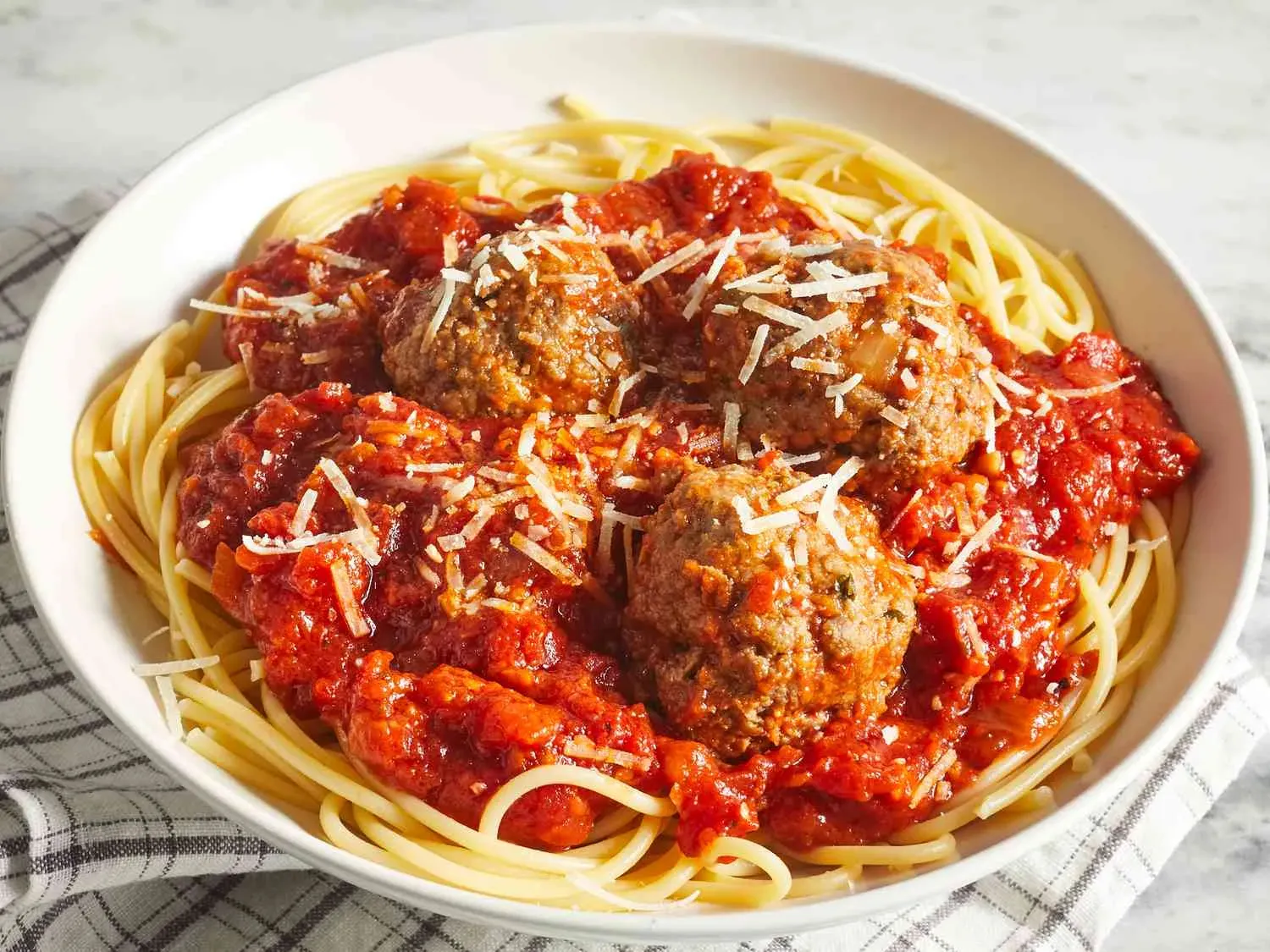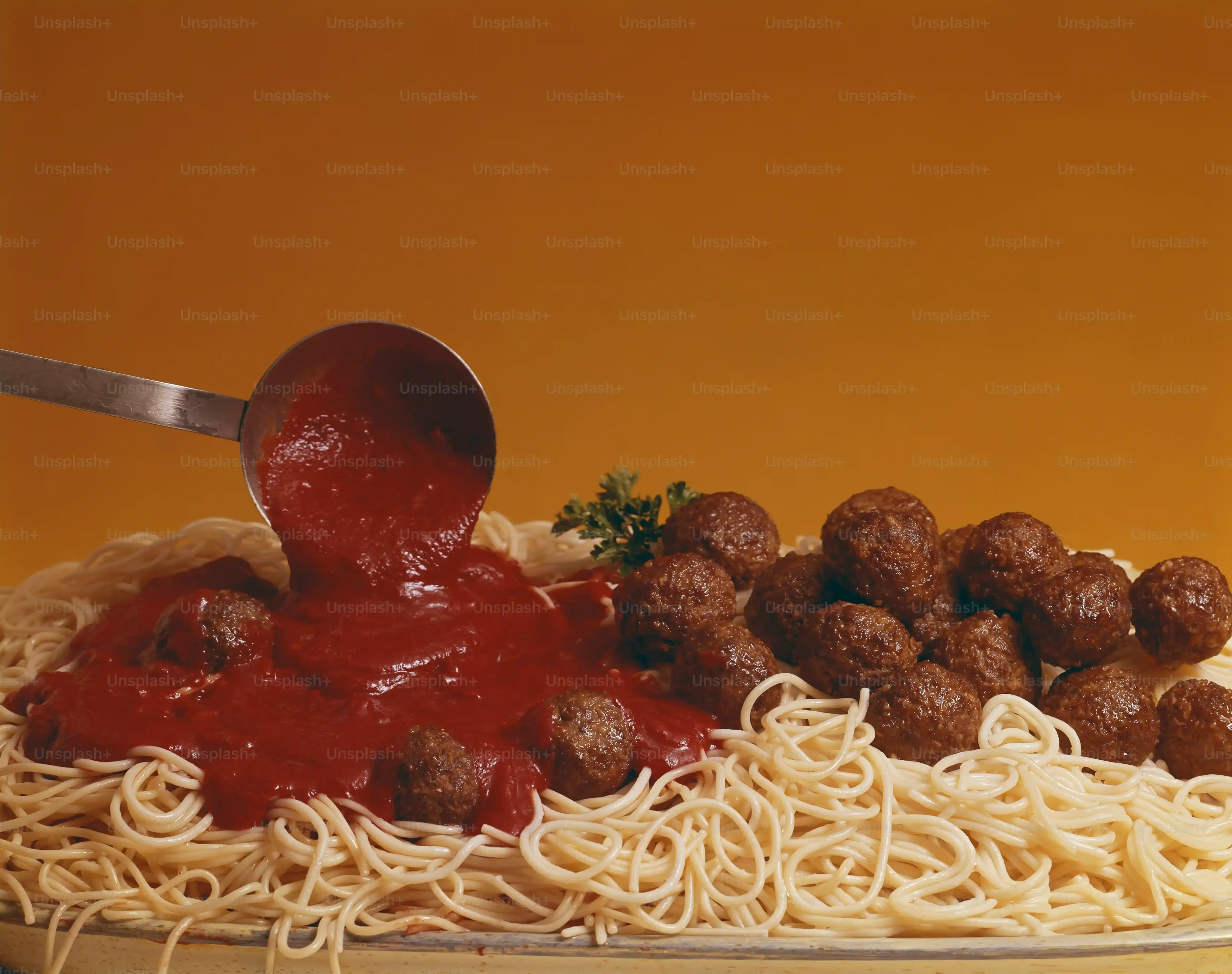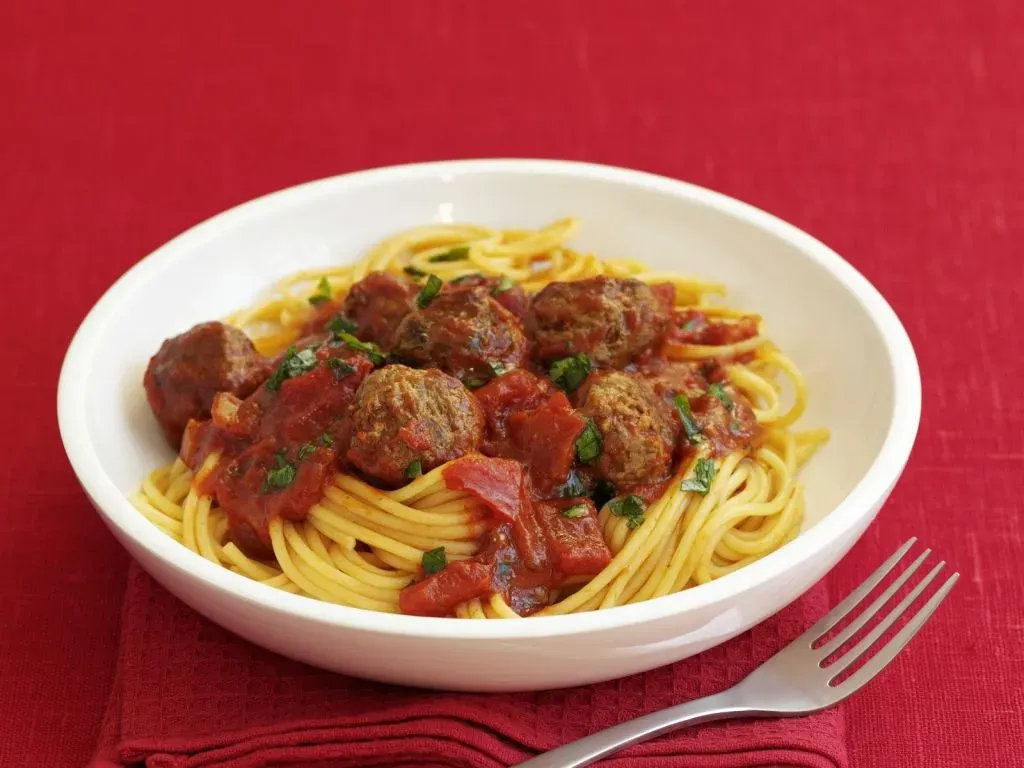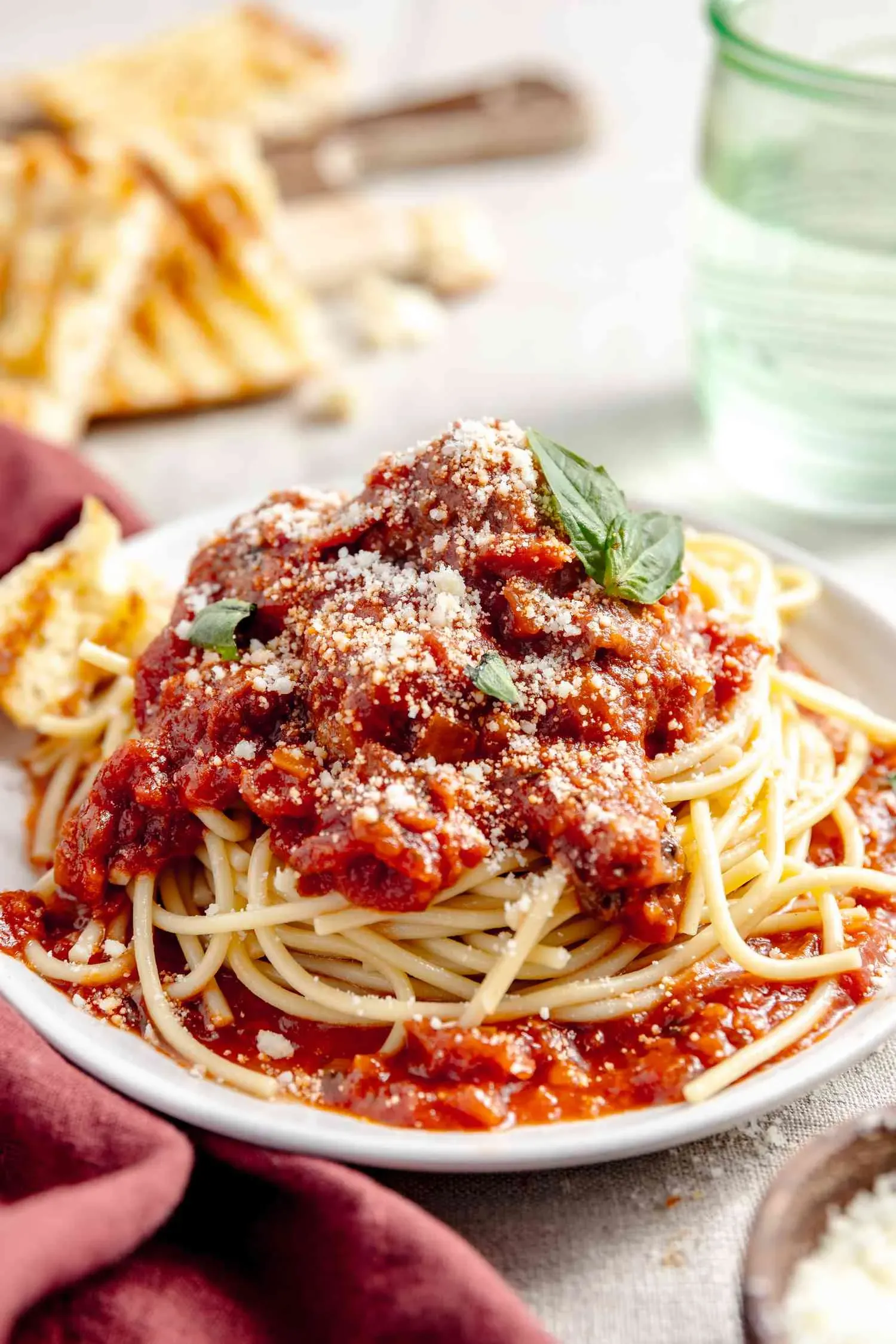Table of Contents
Let's be honest, the world doesn't need another "meh" spaghetti and meatballs recipe. You've probably tried some, maybe they were dry, maybe the sauce tasted like it came from a can (because it did, probably). Finding a reliable, go-to recipe for spaghetti and meatballs with tomato sauce that actually delivers? That feels like hitting the culinary jackpot. It's supposed to be comfort food, right? Not a culinary chore that leaves you wondering why you bothered.
Crafting the Perfect Italian Meatballs

Crafting the Perfect Italian Meatballs
Getting the Meat Mix Right for Crafting the Perfect Italian Meatballs
Forget those recipes that call for just one type of ground meat. That's rookie stuff. If you want truly tender, flavorful meatballs, you need a blend. Think beef, pork, and veal. The beef brings the classic flavor, the pork adds fat for moisture, and the veal keeps things incredibly tender. It’s a classic Italian trifecta for a reason. Using just lean beef? You'll end up with dry little rocks, and nobody wants that. Aim for a mix, usually equal parts, but some folks lean a bit heavier on the beef for more punch. This blend is the absolute foundation for Crafting the Perfect Italian Meatballs.
The Binder and Flavor Bombs
you've got the meat blend sorted. Now you need to hold it all together and inject some serious flavor. Breadcrumbs are your friend here, but not the dry, dusty stuff from a box. We're talking fresh breadcrumbs, maybe soaked briefly in milk or water. This keeps the meatballs moist. Then comes the flavor party: grated Parmigiano-Reggiano cheese (none of that pre-shredded sawdust), fresh parsley chopped fine, a touch of garlic (minced, not granulated), salt, and freshly cracked black pepper. Some people add an egg or two as an extra binder. It’s not strictly necessary if your breadcrumbs are moist and your mix is handled gently, but it doesn't hurt.
- Use a mix of beef, pork, and veal (equal parts is a good starting point).
- Opt for fresh breadcrumbs, maybe moistened slightly.
- Don't skimp on the Parmigiano-Reggiano; use the real stuff.
- Include fresh parsley, minced garlic, salt, and pepper.
Forming and Initial Cooking
Nobody likes a giant, dense meatball. Keep them relatively small, maybe golf ball size, or even a bit smaller. Don't overwork the meat mixture when you're forming them; a light touch keeps them tender. Once formed, you have options. Some folks brown them in a skillet first to get a nice crust and lock in flavor. Others go straight into the simmering tomato sauce. Browning adds an extra layer of taste and texture, giving them a little structural integrity before they hit the sauce bath. This browning step is crucial for many when Crafting the Perfect Italian Meatballs before their long simmer.
Simmering the Rich Tomato Sauce

Simmering the Rich Tomato Sauce
Building the Flavor Base for Your Sauce
so you've got your meatballs ready to go or resting up. Now, the sauce. Don't just dump a jar of questionable red stuff into a pot and call it a day. Simmering the Rich Tomato Sauce starts with building flavor. You need a good amount of olive oil in a heavy-bottomed pot or Dutch oven. Heat it gently, then add finely chopped onion and garlic. Don't burn the garlic – that's a cardinal sin. Cook them until they're soft and translucent. Some folks add a pinch of red pepper flakes here for a little warmth, which is a move I fully endorse. This base layer is crucial for a sauce that doesn't taste flat.
Adding Tomatoes and Letting It Simmer
Once your onion and garlic are fragrant and soft, it's time for the tomatoes. Whole peeled San Marzano tomatoes are the gold standard for Simmering the Rich Tomato Sauce. Crush them by hand right into the pot – it's messy but worth it. Add a bay leaf, maybe a pinch of sugar if your tomatoes are a bit acidic (though good San Marzanos often don't need it), salt, and pepper. Stir it all up, bring it to a gentle simmer, then lower the heat, cover partially, and let it do its thing. This is where the magic happens. The longer it simmers, the deeper the flavor gets. We're talking at least 30-45 minutes, but a couple of hours is even better if you have the time. This low, slow cook transforms simple ingredients into a rich, complex sauce.
Essential Sauce Ingredients
- Good quality olive oil
- Finely chopped onion
- Minced garlic
- Whole peeled tomatoes (San Marzano recommended)
- Bay leaf
- Salt and freshly ground black pepper
- Optional: Red pepper flakes, pinch of sugar
Bringing It All Together: Your Recipe for Spaghetti and Meatballs with Tomato Sauce

Bringing It All Together: Your Recipe for Spaghetti and Meatballs with Tomato Sauce
Introducing the Meatballs to Their Simmering Bath
Alright, you've got your beautifully browned (or not, your call, but browning adds something) meatballs and your rich, bubbling tomato sauce simmering away. This is the moment they unite. Gently slide those meatballs into the sauce. Make sure they are mostly submerged. They aren't just warming up in there; they are finishing cooking and, more importantly, infusing that sauce with their meaty goodness while soaking up all that tomato flavor. This mutual exchange is key to a truly cohesive dish. Don't just dump them in and walk away; give them a little nudge to get settled.
The Slow Dance of Flavors
Once the meatballs are nestled in the sauce, bring it back to a gentle simmer. Cover the pot partially, leaving a little gap for steam to escape. Now, let it cook. How long? At least 30 minutes, but an hour is better if you have the time. The longer they simmer together, the more the flavors meld. The meatballs become incredibly tender, and the sauce thickens and takes on a depth it didn't have before. This isn't a sprint; it's a marathon of flavor development. Stir occasionally, but gently, so you don't break up those precious meatballs.
Marrying Sauce, Meatballs, and Pasta
While your meatballs and sauce are doing their slow dance, get your spaghetti cooking. Use a large pot of generously salted water. Cook the pasta until it's al dente – it should have a slight bite to it. Seriously, don't overcook it; mushy spaghetti is a crime. Before draining the pasta, reserve about a cup of the starchy pasta water. This is liquid gold. Drain the spaghetti, then immediately add it directly to the pot with the sauce and meatballs. Toss everything together gently. If it seems a little dry, add some of that reserved pasta water a tablespoon at a time until the sauce coats the pasta beautifully. This emulsifies the sauce and helps it cling to the spaghetti. Finish with a handful of fresh basil leaves torn by hand and a generous grating of Parmigiano-Reggiano cheese right in the pot before serving. This final mix is what truly completes your recipe for spaghetti and meatballs with tomato sauce.
Cooking the Pasta Just Right for This Classic Recipe for Spaghetti and Meatballs

Cooking the Pasta Just Right for This Classic Recipe for Spaghetti and Meatballs
The Pot, The Water, and The Salt
let's talk pasta. This isn't an afterthought; it's half the dish in your classic recipe for spaghetti and meatballs with tomato sauce. Treating the spaghetti right is non-negotiable. First off, you need a big pot. Seriously, bigger than you think you need. Pasta needs room to swim, not stick together in a sad clump at the bottom. Fill it generously with water. And then, for the love of all that is holy, salt the water. It should taste like the sea, or at least close to it. This is your one chance to season the pasta itself. If the water isn't salty, your pasta will be bland, no matter how good your sauce is. Don't be shy with the salt here.
Timing is Everything: Hitting Al Dente
Once the heavily salted water is at a rolling boil – a *rolling* boil, not just a few bubbles – add your spaghetti. Stir it immediately to prevent sticking. Now, check the package instructions for the cooking time, but treat that as a suggestion, not gospel. Start testing a minute or two before the time is up. You're looking for al dente. That means it's cooked through but still has a slight resistance, a little bite in the center. It shouldn't be hard, but it definitely shouldn't be mush. Remember, the pasta will continue to cook slightly when you toss it with the hot sauce. Pull it out just before you think it's perfect; that's usually the sweet spot for Cooking the Pasta Just Right for This Classic Recipe for Spaghetti and Meatballs. And whatever you do, scoop out a cup of that starchy pasta water *before* you drain the rest. You'll thank me later.
Pasta Cooking Essentials:
- Use a very large pot.
- Fill the pot with plenty of water.
- Salt the water until it tastes like the sea.
- Bring water to a rolling boil before adding pasta.
- Stir pasta immediately after adding to prevent sticking.
- Check for al dente a few minutes before package time.
- Reserve at least a cup of starchy pasta water.
Storing and Freezing Your Delicious Recipe for Spaghetti and Meatballs

Storing and Freezing Your Delicious Recipe for Spaghetti and Meatballs
Keeping Leftovers Fresh in the Fridge
So, you've somehow managed to have leftovers of your amazing recipe for spaghetti and meatballs with tomato sauce. A rare feat, but it happens. Storing them properly means you get to enjoy this goodness again without risking a science experiment in your fridge. Let the dish cool down completely first – putting hot food straight into the fridge can raise the temperature of everything else, which is just asking for trouble. Once cool, transfer the spaghetti and meatballs with sauce into airtight containers. Glass containers are great because they don't stain or hold onto odors like plastic can. Kept this way, your leftovers are generally good for about 3 to 4 days. Beyond that? The quality starts to dip, and you're pushing your luck a bit.
Freezing for Future Cravings
If you've made a big batch (smart move) or know you won't get to the leftovers within a few days, freezing is your best friend. The meatballs themselves freeze beautifully in the sauce. Portion the sauce and meatballs into freezer-safe containers or heavy-duty freezer bags. Squeeze out as much air as possible if using bags to prevent freezer burn. You can freeze the pasta separately or mixed with the sauce and meatballs, though some purists prefer to cook fresh pasta when reheating. Frozen meatballs and sauce will keep for up to 3 months. To reheat, thaw overnight in the fridge and then gently warm on the stovetop. Don't blast it in the microwave unless you enjoy rubbery meatballs and a sad, separated sauce. Freezing your delicious recipe for spaghetti and meatballs with tomato sauce means comfort food is always just a thaw away.
Storage Method | Container Type | Approximate Shelf Life |
|---|---|---|
Refrigeration | Airtight container (glass recommended) | 3-4 days |
Freezing (Meatballs & Sauce) | Freezer-safe container or bag | Up to 3 months |
Freezing (Cooked Pasta) | Freezer-safe container or bag | Up to 1 month (texture may change) |
Your New Go-To Comfort Classic
So there you have it. No culinary acrobatics required, just solid steps for a solid meal. You've got tender meatballs, a sauce that actually tastes like tomatoes, and pasta cooked just right. This isn't some fleeting food trend; it's the kind of meal that sticks around, the one you crave after a long day. Forget the fancy stuff for a minute and just enjoy a really good bowl of spaghetti and meatballs. It's reliable, it's comforting, and now you know how to make it happen whenever the mood strikes. Pretty simple, right?